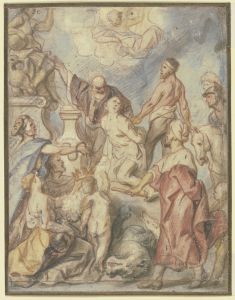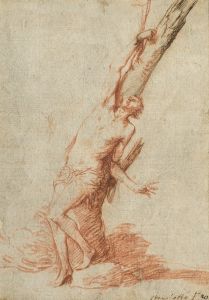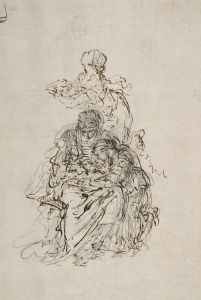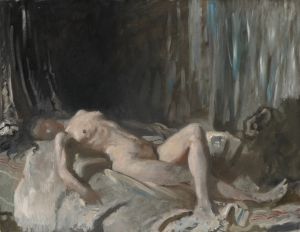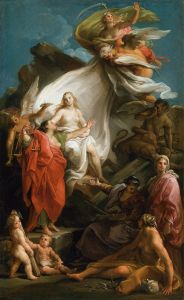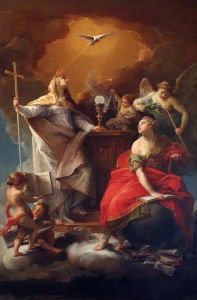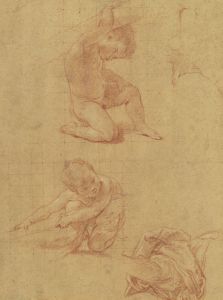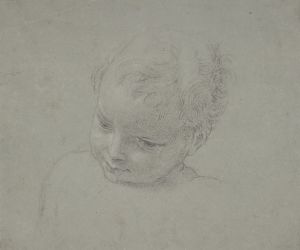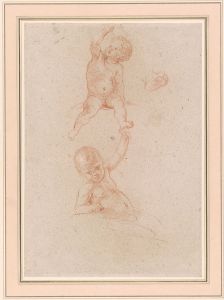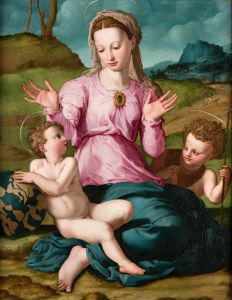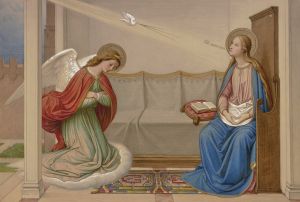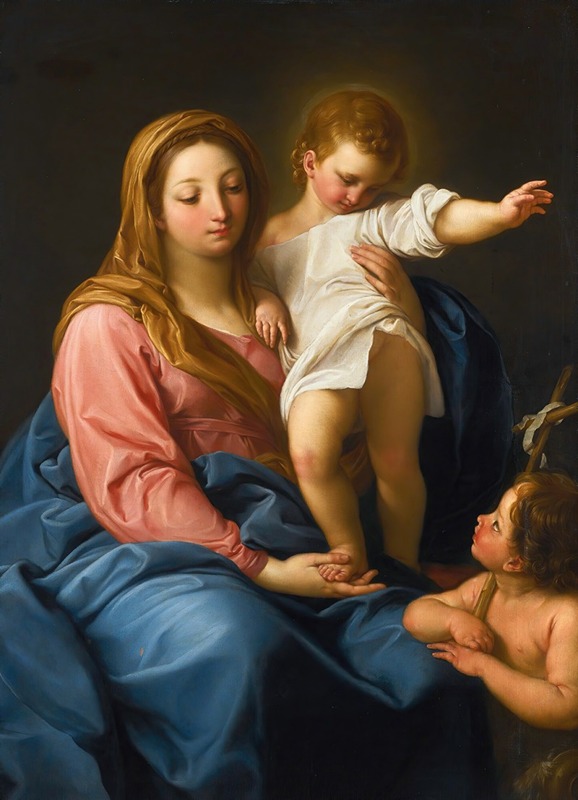
The Madonna And Child With The Infant Saint John The Baptist
A hand-painted replica of Pompeo Batoni’s masterpiece The Madonna And Child With The Infant Saint John The Baptist, meticulously crafted by professional artists to capture the true essence of the original. Each piece is created with museum-quality canvas and rare mineral pigments, carefully painted by experienced artists with delicate brushstrokes and rich, layered colors to perfectly recreate the texture of the original artwork. Unlike machine-printed reproductions, this hand-painted version brings the painting to life, infused with the artist’s emotions and skill in every stroke. Whether for personal collection or home decoration, it instantly elevates the artistic atmosphere of any space.
Pompeo Batoni's "The Madonna and Child with the Infant Saint John the Baptist" is a notable example of 18th-century religious art, reflecting the artist's mastery in combining classical and Baroque elements. Batoni, an Italian painter born in 1708 in Lucca, was renowned for his ability to blend the grandeur of Baroque art with the clarity and harmony of the classical tradition. This painting exemplifies his skill in creating compositions that are both dynamic and serene, capturing the viewer's attention through its vivid colors and expressive figures.
The painting depicts the Virgin Mary holding the Christ Child, with the Infant Saint John the Baptist positioned nearby. This triad is a common theme in Christian art, symbolizing the close relationship between Jesus and John the Baptist, who is often considered his forerunner. The inclusion of Saint John the Baptist as a child emphasizes his role in heralding the coming of Christ, a theme that resonates deeply within Christian iconography.
Batoni's work is characterized by its meticulous attention to detail and the use of rich, vibrant colors. In "The Madonna and Child with the Infant Saint John the Baptist," Batoni employs a warm palette that enhances the divine and tender nature of the scene. The figures are rendered with a softness that conveys both their humanity and their sacredness, a balance that Batoni achieved through his deep understanding of anatomy and his ability to infuse his subjects with a sense of grace and dignity.
The composition of the painting is carefully structured to draw the viewer's eye towards the central figures. The Virgin Mary is depicted with a serene and contemplative expression, her gaze directed towards the Christ Child, who reaches out towards Saint John. This interaction between the figures creates a sense of movement and connection, inviting the viewer to contemplate the spiritual bond between them. The Infant Saint John, often depicted with a lamb or a cross, is shown in a posture of reverence, acknowledging the divine nature of the Christ Child.
Batoni's ability to convey emotion through facial expressions and body language is evident in this work. The gentle interaction between the figures, combined with the soft drapery and the delicate play of light and shadow, creates an atmosphere of intimacy and reverence. This painting not only reflects Batoni's technical prowess but also his deep understanding of religious themes and his ability to communicate them through art.
Throughout his career, Pompeo Batoni was celebrated for his portraits and religious paintings, which were highly sought after by patrons across Europe. His works were admired for their elegance, clarity, and the way they captured the essence of his subjects. "The Madonna and Child with the Infant Saint John the Baptist" is a testament to Batoni's enduring legacy as one of the leading artists of his time, showcasing his ability to blend traditional religious iconography with the artistic innovations of the 18th century.
In summary, Pompeo Batoni's "The Madonna and Child with the Infant Saint John the Baptist" is a masterful representation of religious art, combining classical beauty with Baroque dynamism. Through its harmonious composition and emotive portrayal of sacred figures, the painting continues to captivate audiences, reflecting Batoni's significant contribution to the art world.





